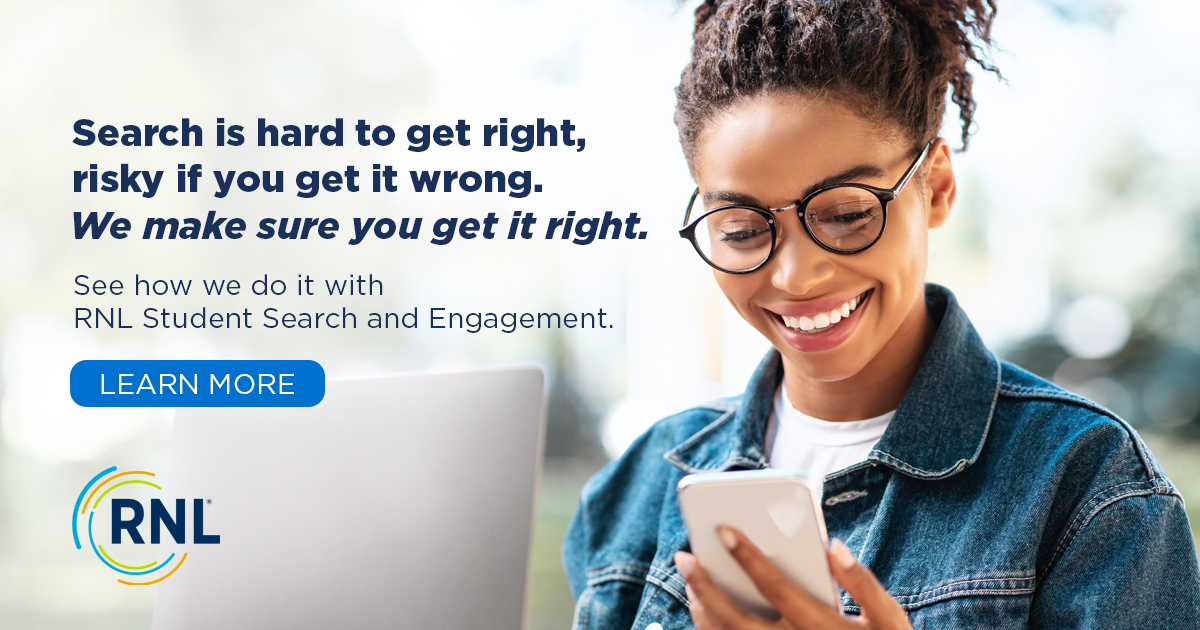enrollment
Why Engaging College-Bound Teenagers Is Harder Than Herding Cats

Communicating with teenagers is not easy. However, we have found over the last two years that it’s possibly less about communication and more about engagement. That rings to true for every demographic, but it seems to even be more important in this age group, with a hundred different apps and platforms seeking their attention. The issue becomes even more complicated when your institution is trying to break through all the distractions and messages being thrown at students.
In our work with hundreds of colleges and universities, we have learned a number of things about how campuses can compete for the attention of high school students. And in that process, we have learned a key difference between communication and engagement.
When you communicate with someone, you choose the channel, and it becomes more about the information you are conveying than about the relationship and the conversation.
When we engage someone, we use more than one channel and nobody is in charge of the communication flow. Instead, we focus on listening to what the other person says to either give them feedback or the information they are looking for. When we engage someone, we get close and personal.
What the data say about the benefit of engagement vs. communication
To show the difference between campaigns that use a more traditional one-directional approach to communication and those use a digital engagement approach, I looked at the data from group of private institutions that RNL did application generation campaigns for. (These students were the class of 2020.)
I found that our application generation campaigns that used a more traditional communication approach had an average inquiry-to-application rate of 5.74% and an enrollment yield of 20.43%. A different group of institutions that followed a digital engagement strategy had an inquiry-to-application rate of 7.46% and average enrollment yields close to 24%.
The same is true for our student search campaigns. Looking at the conversion data for a group of private institutions, email response rates were about 2% higher for those that use a digital engagement strategy compared to more traditional communication approaches. Furthermore, the application- completion rates for the campaigns that used a digital engagement approach were 6% higher for those that did not. Engaging students pays off at every stage of the process!
10 tips for engaging teenagers with your enrollment marketing
What did we do with the engagement campaigns to achieve better results? Here are 10 tips that can help you shift from communication to engagement.
- Make all your messages about them, not about you. I know this is hard when you are trying to explain to students who you are, why they should visit, why they should apply, and why they should enroll. Still, try to craft your message in a way that connects with them and where they are now in their lives.
- Always give them choices and make your messaging interactive. It’s not about the response, it’s about what they do next—whether that’s going to your website, going on social media, watching a video on your website, or filling out a form on your website. You can do this with digital marketing as well as traditional channels such as direct mail.
- Build a relationship with them and get to know them. Ask questions and be willing to give them a space to share their answer (gone are the days of sending them emails with a subject line that poses a question only for them to click and find the only thing waiting for them is an inquiry form that has NOTHING to do with the question they were asked…)
- Make your messages memorable, fun, and entertaining. We don’t pay any attention to boring messaging that blend in the background, so why would teens? Engagement should not come at the expense of you getting your message across—you can do that without alienating and boring them .
- Subject lines are key to making messages engaging. Create an engaging subject line and make sure your message and CTA match that subject line. The worst thing you can do is send them an email with a great subject line in an email that’s totally unrelated.
- Make your messages short and to the point. No further explanation necessary here!
- Make unsubscribing easy. It will help you avoid spending resources on students who are really not interested.
- Test messages to find what engages students. Rigorous testing can help you uncover which messages will resonate with different groups of students as well as provide data on timing, offers, and other strategic insights.
- Use interesting visuals and remember proper ALT text! Teenagers are incredibly visual and will respond more strongly to video, photos, and images. Make sure they are interesting, that videos are also short and to the point, and that you use ALT text to help students who are visually impaired or don’t have images load automatically.
- Finally, don’t send them the same message over and over. If they did not engage with you the first time you sent it, most likely they are going to send you right to their spam folder the fourth time they receive the same message (or throw in the garbage that beautiful postcard).
Increase engagement in your student search campaigns
We are working with campuses nationwide to help them make the shift from communication to engagement with RNL Student Search and Engagement. Not only do we engage students, but also their parents, turning them into enthusiastic enrollment champions.
I invite you to learn more about how you can amplify engagement with your search campaigns and so that grabbing the attention of students is less like herding cats and more like having a conversation.

